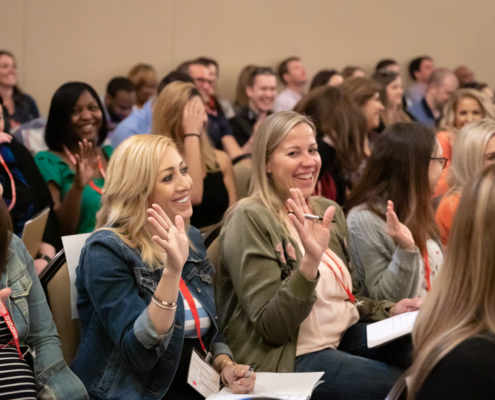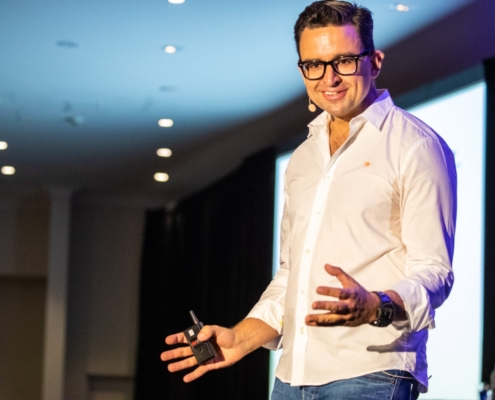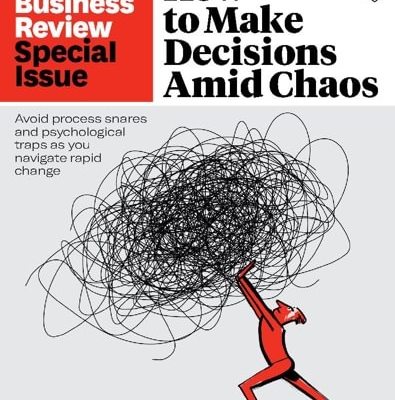 https://www.afterburner.com/wp-content/uploads/2024/10/2462040_PhotoshopImagesBlackFlightSuits_03_091524.png
2369
3553
Ansley Anchors
/wp-content/uploads/2024/07/Afterburner-Logo-Resize-Fullcolor-300x93.png
Ansley Anchors2024-10-31 08:56:592024-11-25 14:56:27Afterburner Black
https://www.afterburner.com/wp-content/uploads/2024/10/2462040_PhotoshopImagesBlackFlightSuits_03_091524.png
2369
3553
Ansley Anchors
/wp-content/uploads/2024/07/Afterburner-Logo-Resize-Fullcolor-300x93.png
Ansley Anchors2024-10-31 08:56:592024-11-25 14:56:27Afterburner Black
Does Your Strategic Planning Model Anticipate (And Permit) Failure?
One of the most popular trends in business literature, blogs, and discussion groups about strategic planning models is how important it is for organizations to permit failure. Although I first accepted the conversation about failure to have been a healthy one, I am increasingly concerned that the message is in danger of becoming lost in translation.
The popular discussion about failure has grown out of several historical and intellectual developments over the past few decades – namely the complex and turbulent modern business environment. It’s clear that innovation requires experiment and, therefore, is an unavoidable byproduct of aggressive attempts to create new products and services that provide value to customers. Any negative stigma that inhibits aggressive experimentation, therefore, inhibits innovation. As Harvard Business School professor, Amy Edmondson reminds us, “. . . the most exquisite plans and disciplined execution cannot guarantee success when knowledge about how to produce a desired result is either still developing or is in a state of dramatic flux.”[i] In other words, when success is the result of well-known good practices, failure is a bad thing.
Your Strategic Planning Models Must Account for Possible Failures
There is a dangerous chasm of difference between what is meant by the acceptance of failure and the potential disasters that may be precipitated through misapprehending that meaning. One must account for all possible failures in the strategic business planning processes. According to psychologist Ron Friedman, author of The Best Place to Work and renowned expert on building extraordinary workplaces, failure is only permissible under certain circumstances. Individuals and teams should be permitted to fail only when the cost of that failure is low or insignificant and opportunities abound such that “when your attempt rate is high, each individual failure becomes a lot less significant.”[ii]
Failure itself can only be judged as negative, regardless of its long-term consequences. When New Coke emerged in 1985, was rejected by consumers, and, yet drove up sales of the Classic Coke product, the long-term intent may have been a success. But, that was not the intent of the New Coke product. Complex systems react in strange ways. New Coke was a failure – pure and simple. However, the learning that resulted from it continues to be an important one for the Coca-Cola Company, and for branding and marketing strategists in general.
Under the circumstances that Friedman outlines, failure is permissible so long as it provides valuable learning or otherwise facilitates progress down the road to success. Perhaps it means striking out on a new road or clearing a new path in the search for a route to a final destination. Thus, the more modern and encouraging notion of failure is that it is a permissible consequence of experimentation and intentional efforts to succeed in the face of the unknown.
Failure should be correlated to risk. We must all take risks in order to be successful. So, we should take risks in order to succeed or to generate learning that will help us find the right path to success. If failure does not contribute to that success, in even a distantly related way, then it is failure for failure’s sake. This is a dangerous misapprehension of failure as a permissive result. Beware the Golem Effect – the self-fulfilling nature of low expectations. Misunderstanding when failure is acceptable may lead to damaging results. Lowered expectations are a danger to any team or organization because they may lead to self-fulfilling prophesies where a low expectation for success drives mediocre results.
Fail Fast, But Learn
Instead, a good strategic planning model encourages risk when failure costs little. But, always require formal learning from such experiences. Failure must be accepted in an experimental setting and the learning from that failure not only encouraged, but mandated. Fail fast, but learn.
The fear of individual attribution, or fault, lies at the heart of the misapprehension of the role of failure in successful endeavors. Humans are prone to error. But, instead of providing the structures to avoid such errors, teams and organizations often pass the blame for failure on the erring individual rather than learning as an organization and improving the collective’s processes, standards, and other mechanisms that help individuals and teams avoid errors in the future. Ultimately, the organization that seeks to improve itself by learning from failures rather than blaming the individual and placing the burden of change on a lone member of the organization will be the organization that wins in the turbulent world.
Military aviation and other high-risk military endeavors, epitomize cultures that despise failure and, though always accepting its inevitability, relentlessly attempt to drive it out of their organizations. Do these organizations fail? Sure they do – from time to time. It’s an inevitability in a high-risk environment and destruction of property, injury or even death may result. But every endeavor is carefully planned to eliminate as much risk as possible. Success is always the intended goal. And, regardless of what happens in the end, they always learn from their experiences in order improve and adapt.
In the U.S. Army, the method for learning from failure is called the After Action Review or AAR. In military aviation, it is called a debrief. Our firm, Afterburner Inc., adapted and evolved these notions into a formal debriefing process that helps teams and organizations drive past individual attribution and toward healthy learning and development. Good debriefing practices view failure and success as neutral. All that matters within the debrief is that learning occurs and that the individuals, team, and organization as a whole improve consequently.
It is not just the fear of failure that inhibits the necessary risk-taking necessary to drive innovation in modern organizations. Such risk-averse behavior comes also from the fear of blame. If organizations can remove the fear of blame by debriefing to results without individual attribution, then those organizations can reduce the apprehension to risk and fail when the learning that failure provides paves the way to success.
What leaders must do to encourage innovation is not to permit failure, but to equip its teams and individuals with the processes, like the planning and debriefing processes within Flawless Execution™, that improve the chances of success and guarantee valuable learning even when failure is met. In the end, successful organizations must take careful action and assess risks. Small failures are a consequence, rather than an ingredient, of success.
William M. Duke is a retired Naval Officer and Master Practitioner of the Flawless Execution methodology. He is the co-author of The Debrief Imperative (Premiere, 2011) and Down Range: A Transitioning Veteran’s Career Guide to Life’s Next Phase (Wiley, 2013).
[i] Amy C. Edmondson. Teaming: How Organizations Learn, Innovate, and Compete in the Knowledge Economy. (Jossey-Bass, 2012). Pg 21.
[ii] Ron Friedman, PhD. The Best Place to Work: The Art and Science of
Creating an Extraordinary Workplace. (Perigee, 2014) Pg. 8.
LEARN HOW TO BUILD AN ELITE TEAM TODAY!
Share This Post
More Like This
 https://www.afterburner.com/wp-content/uploads/2024/10/2462040_PhotoshopImagesBlackFlightSuits_03_091524.png
2369
3553
Ansley Anchors
/wp-content/uploads/2024/07/Afterburner-Logo-Resize-Fullcolor-300x93.png
Ansley Anchors2024-10-31 08:56:592024-11-25 14:56:27Afterburner Black
https://www.afterburner.com/wp-content/uploads/2024/10/2462040_PhotoshopImagesBlackFlightSuits_03_091524.png
2369
3553
Ansley Anchors
/wp-content/uploads/2024/07/Afterburner-Logo-Resize-Fullcolor-300x93.png
Ansley Anchors2024-10-31 08:56:592024-11-25 14:56:27Afterburner Black https://www.afterburner.com/wp-content/uploads/2024/09/Audience-reaction-2.jpeg
1365
2048
Nate Riggins
/wp-content/uploads/2024/07/Afterburner-Logo-Resize-Fullcolor-300x93.png
Nate Riggins2024-02-09 17:02:342024-11-25 14:56:27Four Key Items to Include in Your Next Corporate Event
https://www.afterburner.com/wp-content/uploads/2024/09/Audience-reaction-2.jpeg
1365
2048
Nate Riggins
/wp-content/uploads/2024/07/Afterburner-Logo-Resize-Fullcolor-300x93.png
Nate Riggins2024-02-09 17:02:342024-11-25 14:56:27Four Key Items to Include in Your Next Corporate Event https://www.afterburner.com/wp-content/uploads/2024/09/embracing-failure-afterburner-1-scaled-1.jpg
1920
2560
Nate Riggins
/wp-content/uploads/2024/07/Afterburner-Logo-Resize-Fullcolor-300x93.png
Nate Riggins2024-01-09 22:52:542024-11-25 14:56:28Reimagining Your Sales Kickoff: Infusing Innovation and Connection
https://www.afterburner.com/wp-content/uploads/2024/09/embracing-failure-afterburner-1-scaled-1.jpg
1920
2560
Nate Riggins
/wp-content/uploads/2024/07/Afterburner-Logo-Resize-Fullcolor-300x93.png
Nate Riggins2024-01-09 22:52:542024-11-25 14:56:28Reimagining Your Sales Kickoff: Infusing Innovation and Connection https://www.afterburner.com/wp-content/uploads/2024/09/fortune-cookies-1400x933-1.jpeg
933
1400
Nate Riggins
/wp-content/uploads/2024/07/Afterburner-Logo-Resize-Fullcolor-300x93.png
Nate Riggins2024-01-02 18:24:072024-11-25 14:56:31Want to make better business predictions? Flawless Execution is the answer.
https://www.afterburner.com/wp-content/uploads/2024/09/fortune-cookies-1400x933-1.jpeg
933
1400
Nate Riggins
/wp-content/uploads/2024/07/Afterburner-Logo-Resize-Fullcolor-300x93.png
Nate Riggins2024-01-02 18:24:072024-11-25 14:56:31Want to make better business predictions? Flawless Execution is the answer. https://www.afterburner.com/wp-content/uploads/2024/09/three-fighter-jets-maneuvering-in-sequence-min-1.jpeg
1133
1920
Nate Riggins
/wp-content/uploads/2024/07/Afterburner-Logo-Resize-Fullcolor-300x93.png
Nate Riggins2024-01-02 16:08:452024-11-25 14:56:31How to Build Accountability in the Workplace – and Why It Matters
https://www.afterburner.com/wp-content/uploads/2024/09/three-fighter-jets-maneuvering-in-sequence-min-1.jpeg
1133
1920
Nate Riggins
/wp-content/uploads/2024/07/Afterburner-Logo-Resize-Fullcolor-300x93.png
Nate Riggins2024-01-02 16:08:452024-11-25 14:56:31How to Build Accountability in the Workplace – and Why It Matters https://www.afterburner.com/wp-content/uploads/2024/09/Christian-_Boo_-Boucousis-on-stage-1.jpeg
1066
1600
Nate Riggins
/wp-content/uploads/2024/07/Afterburner-Logo-Resize-Fullcolor-300x93.png
Nate Riggins2024-01-01 17:03:122024-11-25 14:56:32How to Pick the Right Guest Speaker for Your Event
https://www.afterburner.com/wp-content/uploads/2024/09/Christian-_Boo_-Boucousis-on-stage-1.jpeg
1066
1600
Nate Riggins
/wp-content/uploads/2024/07/Afterburner-Logo-Resize-Fullcolor-300x93.png
Nate Riggins2024-01-01 17:03:122024-11-25 14:56:32How to Pick the Right Guest Speaker for Your Event https://www.afterburner.com/wp-content/uploads/2024/09/purposeful-action-afterburner-1.jpg
1080
1920
Nate Riggins
/wp-content/uploads/2024/07/Afterburner-Logo-Resize-Fullcolor-300x93.png
Nate Riggins2023-12-21 15:23:142024-11-25 14:56:32Unlocking the Power of Purposeful Action in Work and Life
https://www.afterburner.com/wp-content/uploads/2024/09/purposeful-action-afterburner-1.jpg
1080
1920
Nate Riggins
/wp-content/uploads/2024/07/Afterburner-Logo-Resize-Fullcolor-300x93.png
Nate Riggins2023-12-21 15:23:142024-11-25 14:56:32Unlocking the Power of Purposeful Action in Work and Life https://www.afterburner.com/wp-content/uploads/2024/09/how-to-make-better-decisions-afterburner-1.jpg
1080
1920
Nate Riggins
/wp-content/uploads/2024/07/Afterburner-Logo-Resize-Fullcolor-300x93.png
Nate Riggins2023-12-12 17:38:372024-11-25 14:56:32Empowering Decisions Through Debrief Culture
https://www.afterburner.com/wp-content/uploads/2024/09/how-to-make-better-decisions-afterburner-1.jpg
1080
1920
Nate Riggins
/wp-content/uploads/2024/07/Afterburner-Logo-Resize-Fullcolor-300x93.png
Nate Riggins2023-12-12 17:38:372024-11-25 14:56:32Empowering Decisions Through Debrief Culture
Mastering Decision-Making in a World of Chaos: Lessons from Harvard Business Review Magazine
Business Culture, Leadership, MotivationAbout Us
Building Strong Teams Through the Guidance of Fighter Pilot Keynote Speakers.

